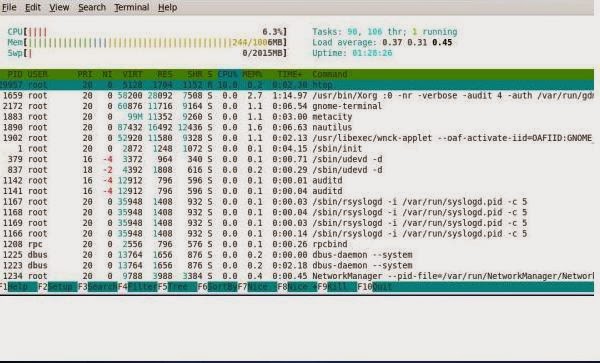

Process monitor linux full#
Tcpdump: verbose output suppressed, use -v or -vv for full protocol decode tcpdump is almost available in all major Linux distributions. It also provides an option to save captured packages in a file for later analysis. The tcpdump command is one of the most widely used command-line network packet analyzer or packets sniffer programs that is used to capture or filters TCP/IP packets that are received or transferred on a specific interface over a network. Systemd 1 root mem REG 8,2 3058736 134919279 /usr/lib64/libcrypto.so.1.1.1cįor more usage and examples, read: 10 lsof Command Examples in Linux 4. # lsofĬOMMAND PID TID TASKCMD USER FD TYPE DEVICE SIZE/OFF NODE NAME The most common format for lsof command is. With this command, you can easily identify which files are in use. One of the main reasons for using this command is when a disk cannot be unmounted and displays the error that files are being used or opened. The open files included are disk files, network sockets, pipes, devices, and processes. The lsof command is used in many Linux/Unix-like systems to display a list of all the open files and the processes.
Process monitor linux free#
R b swpd free buff cache si so bi bo in cs us sy id wa stġ 0 43008 275212 1152 561208 4 16 100 105 65 113 0 1 96 3 0įor more usage and examples, read: 6 Vmstat Command Examples in Linux 3.

The common usage of vmstat command format is.
Process monitor linux install#
Install VmStat in Linuxīy default vmstat command is not available under Linux systems you need to install a package called sysstat (a powerful monitoring tool) that includes a vmstat program. Linux VmStat command is used to display statistics of virtual memory, kernel threads, disks, system processes, I/O blocks, interrupts, CPU activity, and much more. # topįor more examples of Top command read: 12 TOP Command Examples in Linux 2. The top command is much useful for system administrators to monitor and take corrective action when required. It also shows high memory and cpu utilization of running processes. It displays CPU usage, Memory usage, Swap Memory, Cache Size, Buffer Size, Process PID, User, Commands, and much more. The top command is used to display all the running and active real-time processes in an ordered list and updates it regularly. Linux Top command is a performance monitoring program that is used frequently by many system administrators to monitor Linux performance and it is available under many Linux/Unix-like operating systems.


 0 kommentar(er)
0 kommentar(er)
